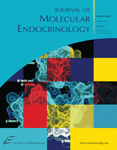| HOME | HELP | FEEDBACK | SUBSCRIPTIONS | ARCHIVE | SEARCH |
|
|
||||||||
| ||||||||||||||||||||||||||||||||||||||||||||||||||||||||||||
REVIEW |
A Colao, Dept. of Molecular and Clin. Endocrinology and Oncology, Fac. di Med/Univ. di Napoli Federico II, Naples, I-80131 , Italy
C Di Somma, Dept. of Molecular and Clin. Endocrinology and Oncology, Fac. di Med/Univ. di Napoli Federico II, Naples, Italy
R Pivonello, Naples, Italy
A Faggiano, Naples, Italy
G Lombardi, Dept. of Molecular and Clin. Endocrinology and Oncology, Fac. di Med/Univ. di Napoli Federico II, Naples, Italy
S Savastano, Naples, Italy
Correspondence: Annamaria Colao, Email: colao{at}unina.it
Abstract
Surgery is the first-line treatment of patients with clinically non-functioning pituitary adenomas (NFA). Because of lack of clinical syndrome these tumors are diagnosed with a variable delay when patients suffer from compression symptoms (hypopituitarism, headache, visual field defects) due to the extension of the tumor outside the pituitary fossa. Surgery is followed by residual tumor tissue in most patients. In these cases, radiotherapy is generally used to prevent tumor re-growth. However, NFA cell membranes, in analogy with GH- and PRL-secreting adenoma, express somatostatin and dopamine receptors. Treatment with somatostatin analogues and dopamine-agonists induced some beneficial effects on visual field defects and was also followed by tumor shrinkage in a minority of cases. Dopamine-agonists seem to be more effective on tumor shrinkage than somatostatin analogues. More recently, a combination treatment with both somatostatin analogues and dopamine-agonists have been tested in a few patients with interesting results. Lack of randomized, placebo-controlled trials prevents any conclusion on the efficacy of these drugs. In contrast, use of gonatotropin-releasing hormone analogues has been abandoned.
This article has been cited by other articles:
 |
F. E. Gordon, C. L. Nutt, P. Cheunsuchon, Y. Nakayama, K. A. Provencher, K. A. Rice, Y. Zhou, X. Zhang, and A. Klibanski Increased Expression of Angiogenic Genes in the Brains of Mouse Meg3-Null Embryos Endocrinology, June 1, 2010; 151(6): 2443 - 2452. [Abstract] [Full Text] [PDF] |
||||
 |
M. C. Zatelli, M. Minoia, C. Filieri, F. Tagliati, M. Buratto, M. R. Ambrosio, M. Lapparelli, M. Scanarini, and E. C. degli Uberti Effect of Everolimus on Cell Viability in Nonfunctioning Pituitary Adenomas J. Clin. Endocrinol. Metab., February 1, 2010; 95(2): 968 - 976. [Abstract] [Full Text] [PDF] |
||||
 |
F. Barbieri, A. Pattarozzi, M. Gatti, C. Aiello, A. Quintero, G. Lunardi, A. Bajetto, A. Ferrari, M. D. Culler, and T. Florio Differential efficacy of SSTR1, -2, and -5 agonists in the inhibition of C6 glioma growth in nude mice Am J Physiol Endocrinol Metab, November 1, 2009; 297(5): E1078 - E1088. [Abstract] [Full Text] [PDF] |
||||
 |
C Hagen, H D Schroeder, S Hansen, C Hagen, and M Andersen Temozolomide treatment of a pituitary carcinoma and two pituitary macroadenomas resistant to conventional therapy Eur. J. Endocrinol., October 1, 2009; 161(4): 631 - 637. [Abstract] [Full Text] [PDF] |
||||
 |
D. Ferone, F. Gatto, M. Arvigo, E. Resmini, M. Boschetti, C. Teti, D. Esposito, and F. Minuto The clinical-molecular interface of somatostatin, dopamine and their receptors in pituitary pathophysiology J. Mol. Endocrinol., May 1, 2009; 42(5): 361 - 370. [Abstract] [Full Text] [PDF] |
||||
| HOME | HELP | FEEDBACK | SUBSCRIPTIONS | ARCHIVE | SEARCH |